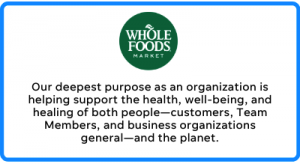Think about the last video you watched. How did you find it? Were you actively looking for it? If that’s your answer, we call your bluff. Chances are that video – the one that made you drop everything you were doing and indulge in distraction – was one you stumbled upon during a habitual newsfeed swipe through one of your many social media apps. You probably swiped past dozens of videos before landing on the one that stole your attention. So why did you stop there?
The truth is, in this era of abundant media, users are more selective than ever. Seldom do consumers click on videos because they want to be sold something. So falling under that “cheap commercial” umbrella is essentially a death trap for businesses hoping to reel in more business. Separate your video from commercial status with these three essential takeaways.
Video is a tool, not a crutch.
While video is an unparalleled medium for some extraordinary content, it isn’t always the answer. Don’t just use video for the sake of using video. Sometimes a story doesn’t have, nor warrant, a ton of visuals and would be better told through the written word, for instance.

When considering video for your story, it’s important to ask yourself: Is video the most effective way to reach my target audience?
Jargon is jarring.
Unless your video is intended for someone in your profession as an instructional tool – or is targeting someone at the bottom of the sales funnel inquiring about brand specifics – avoid using words that only those in the industry would understand. Use plain language.
The news media does a great job of this. You would never hear a reporter say, “The H. F. 30 legislation amending Minnesota Statutes 2016 section 340A.504 subdivision four is under review.” (Be honest, we know you didn’t even read those numbers.) Instead, they’d say something like, “Sunday liquor sales in Minnesota are back on the table.” Because that’s what viewers want to know. This goes for both direct and organic traffic. People are more likely to stumble upon or search topics using “everyday” language that they can easily digest.
Emotions are the essence of viral video.
Now, for the crème de la crème. The meat and potatoes. The heart of storytelling. The single most important element that serves as the distinction between a compelling story and a cheap commercial, is emotion.
Whether a political movement that strikes a chord, or a ridiculous GIF that resembles your college prime – the driver behind shared and “liked” content is relatability. Relatable content stirs emotion. Emotion propels content sharing. See where this is going? How many times have you shared a video with a friend simply because you thought, “omg, that is totally us!” Sometimes it’s as easy as that. Other times, it’s about gripping an emotion viewers least expected. Who can relate to a commercial that’s constantly plugging itself? Truly captivating video should be able to market itself without even mentioning the brand aloud. To create excellent video content, you must tell a story.
One phenomenal example of this, is this video by the well-known granola company, Nature Valley. Never once in this story do you hear the words “Nature Valley.” It’s not loudly plugging itself. It’s tugging at multi-generational heartstrings and the values in which the brand aligns with. Now that’s a video worth sharing! And yes, their brand is shared along with it. Tell the story that aligns with your brand’s core values. Make it personal. Make it emotional.
While there are many technical elements to enhance video quality, remember this: Your message is best understood using plain language. If you’re over-selling yourself, you’re not selling consumers. And if your video doesn’t give people “the feels,” you’ve missed the mark.
Digital & Social Articles on Business 2 Community
(48)
Report Post






